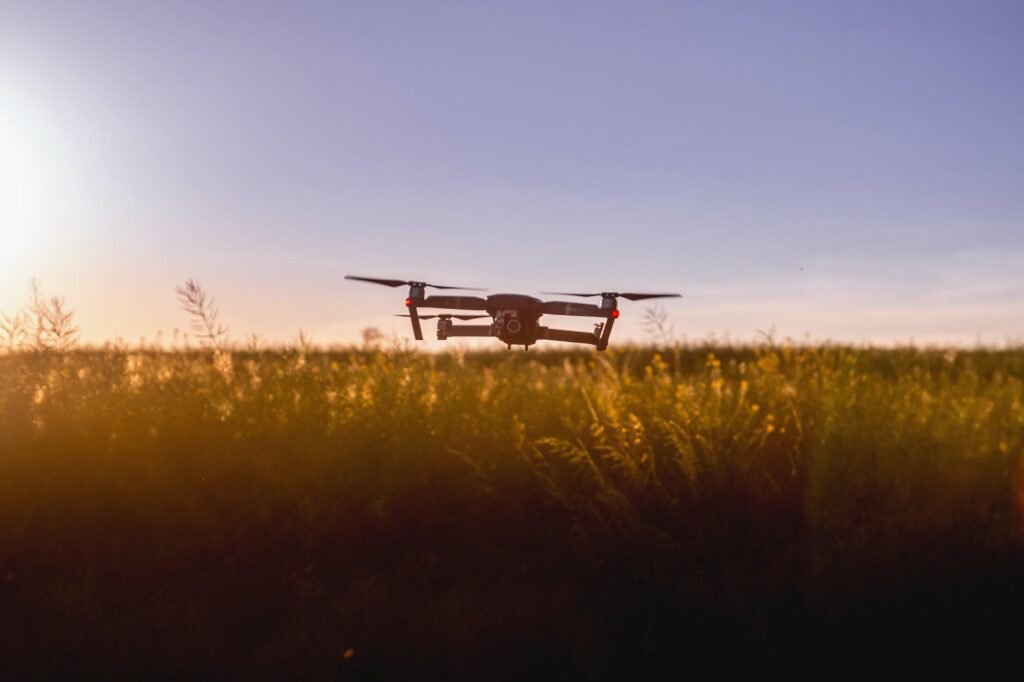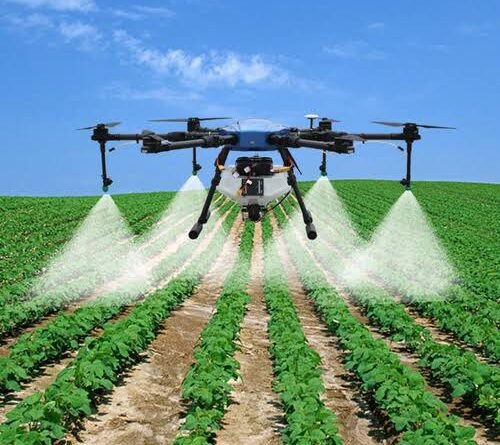Soaring High: Unlocking the Potential of Agriculture Drones in India

In recent years, the field of agriculture has witnessed a remarkable transformation with the emergence of advanced technologies. Among these innovative solutions, agriculture drones have taken center stage, revolutionizing the way farmers operate and ushering in a new era of precision farming. With India being an agricultural powerhouse, the integration of drones in the country’s farming practices holds tremendous promise. In this blog, we will delve into the future of agriculture drones in India and explore the myriad benefits they bring to the table.
Enhancing Efficiency and Productivity:
One of the primary advantages of agriculture drones lies in their ability to enhance efficiency and productivity on farms. Equipped with high-resolution cameras and sensors, drones can collect vast amounts of data regarding crop health, soil conditions, and irrigation needs. By analyzing this data, farmers gain valuable insights that enable them to make informed decisions regarding planting, fertilization, and pest control. This data-driven approach optimizes resource allocation, reduces waste, and ultimately leads to higher crop yields.
Crop Monitoring and Management:
Traditional methods of crop monitoring often rely on manual labor and visual inspections, which can be time-consuming and prone to human error. Agriculture drones, on the other hand, offer a bird’s-eye view of the fields, capturing detailed images and providing real-time updates on crop health. Through advanced imaging techniques, drones can identify early signs of disease, nutrient deficiencies, or water stress. With this timely information, farmers can take proactive measures to address these issues, preventing crop losses and increasing overall profitability.
Precise Application of Inputs:
Agriculture drones have the potential to revolutionize the application of inputs such as fertilizers, pesticides, and herbicides. Instead of blanket spraying, which can be inefficient and harmful to the environment, drones enable precise application based on the specific needs of each crop. By using GPS and advanced mapping technologies, drones can target specific areas, minimizing the use of chemicals and reducing the impact on surrounding ecosystems. This targeted approach not only saves costs but also promotes sustainable farming practices.
Rapid Crop Scouting and Damage Assessment:
Natural disasters, pest infestations, and diseases pose significant threats to agricultural production. With their ability to cover large areas quickly, drones prove invaluable in rapid crop scouting and damage assessment. In the event of a crisis, drones can swiftly identify affected areas, allowing farmers to respond promptly and deploy resources where they are most needed. This early detection and mitigation can prevent further spread of diseases, limit losses, and help farmers recover more efficiently.
Access to Remote and Challenging Terrain:
India’s agricultural landscape is diverse, comprising vast plains, hilly regions, and remote areas. Agriculture drones offer a unique advantage by providing access to these challenging terrains that are often difficult to reach by traditional means. By flying over rugged landscapes and collecting data, drones enable farmers in remote areas to benefit from modern agricultural practices. This inclusivity can help bridge the gap between small-scale farmers and technological advancements, ensuring equitable distribution of resources and knowledge.
Overcoming Challenges and Embracing the Future:
While the future of agriculture drones in India holds immense potential, several challenges need to be addressed for widespread adoption. Issues such as regulatory frameworks, privacy concerns, training requirements, and initial investment costs must be carefully navigated. Collaborative efforts between the government, drone manufacturers, agricultural experts, and farmers themselves are crucial in overcoming these obstacles.
The future of agriculture drones in India is bright, with the potential to revolutionize farming practices and empower farmers across the country. By leveraging the capabilities of drones for crop monitoring, precise input application, rapid damage assessment, and accessing remote terrain, Indian farmers can improve efficiency, increase productivity, and adopt sustainable farming practices. As we embrace this exciting technology, it is essential to ensure its responsible and inclusive integration into the agricultural ecosystem, ultimately leading to a more prosperous and sustainable future for Indian agriculture.




Great